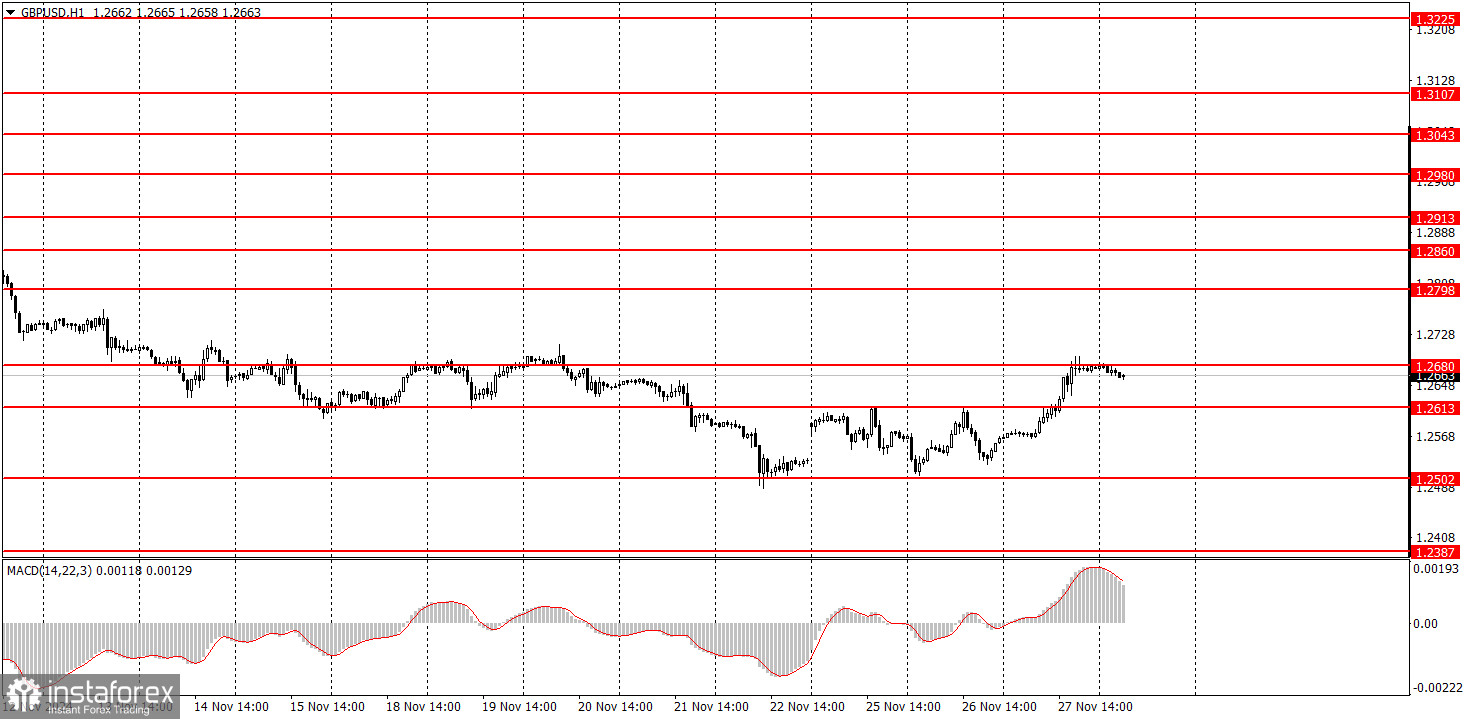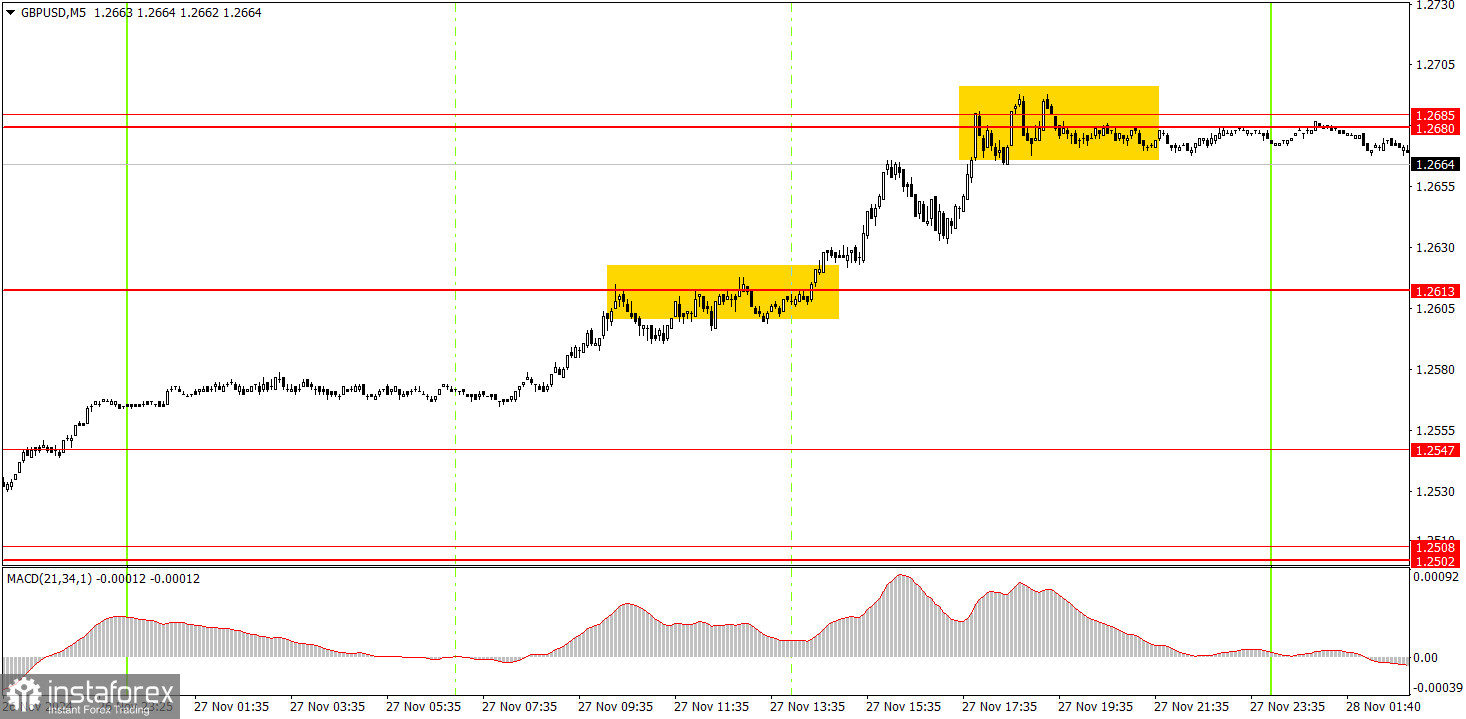Analysis of Wednesday's Trades:
1H Chart of GBP/USD:

On Wednesday, the GBP/USD pair corrected slightly upward, reaching the 1.2680 level. This level could easily act as the point where the downward trend resumes. For the British pound to see further gains, new supportive data will be required. However, neither today nor tomorrow are significant events planned in the UK or the U.S. that could drive the pound upward. The correction may theoretically continue on technical grounds, but we still expect the pair to decline in the medium term.
Even in a downtrend, the price does not fall every day. Corrections can sometimes last for one or even two weeks. The key is to understand the broader trend, which remains clearly downward.
5M Chart of GBP/USD:

On the 5-minute timeframe, a strong buy signal appeared near the 1.2613 level on Wednesday. Although the price initially struggled to break this level, it eventually succeeded. The area of 1.2680-1.2685 was reached shortly afterward, offering a clear opportunity to take profits on long positions. A bounce from this area could also have been used to open short positions. Currently, the British pound is more likely to decline, as any upward movement represents a correction.
How to Trade on Thursday:
On the hourly timeframe, the GBP/USD pair remains in a downward trend. In the medium term, we fully expect the pound to continue declining, as this seems the most logical outcome. While the pound has begun a correction, this phase may take time to complete. However, it's essential to remember that the current upward movement is driven purely by technical factors.
For Thursday, traders may consider short positions if the 1.2680-1.2685 level holds as resistance. A breakout above this area would indicate further bullish momentum for the British pound.
On the 5-minute timeframe, consider trading at the following levels: 1.2387, 1.2445, 1.2502-1.2508, 1.2547, 1.2633, 1.2680-1.2685, 1.2754, 1.2791-1.2798, 1.2848-1.2860, 1.2913, 1.2980-1.2993.
No significant events or publications are scheduled for Thursday in the U.S. or the UK. It's unlikely that the market will push the pound upward further today. A retracement within the ongoing correction is more probable.
Key Rules of the Trading System:
- Signal strength depends on the time taken to form the signal (bounce or breakthrough of a level). The quicker the formation, the stronger the signal.
- If two or more trades at a specific level produce false signals, ignore subsequent signals from that level.
- In a range-bound market, pairs may produce numerous false signals or none at all. At the first signs of range-bound conditions, stop trading.
- Open trades during the European session and the first half of the U.S. session, and manually close all trades afterward.
- On the hourly timeframe, only use MACD signals when volatility is high and the trend is confirmed by a trendline or channel.
- Treat two closely spaced levels (5-20 points apart) as a support or resistance area.
- Once the price moves 20 points in the expected direction, set a Stop Loss at breakeven.
What the Charts Show:
- Support and resistance price levels: These levels act as targets for opening buy or sell trades. Take Profit levels can also be placed near these areas.
- Red lines: Channels or trendlines that indicate the current trend and preferred trading direction.
- MACD Indicator (14,22,3): The histogram and signal line provide supplementary trading signals.
- Significant speeches and reports: Listed in the economic calendar, these can heavily influence currency pair movements. During such events, trade cautiously or exit positions to avoid sharp reversals.
Advice for Beginners:
Not every trade will be profitable. Developing a clear strategy and applying proper money management are critical for achieving long-term success in forex trading.





















